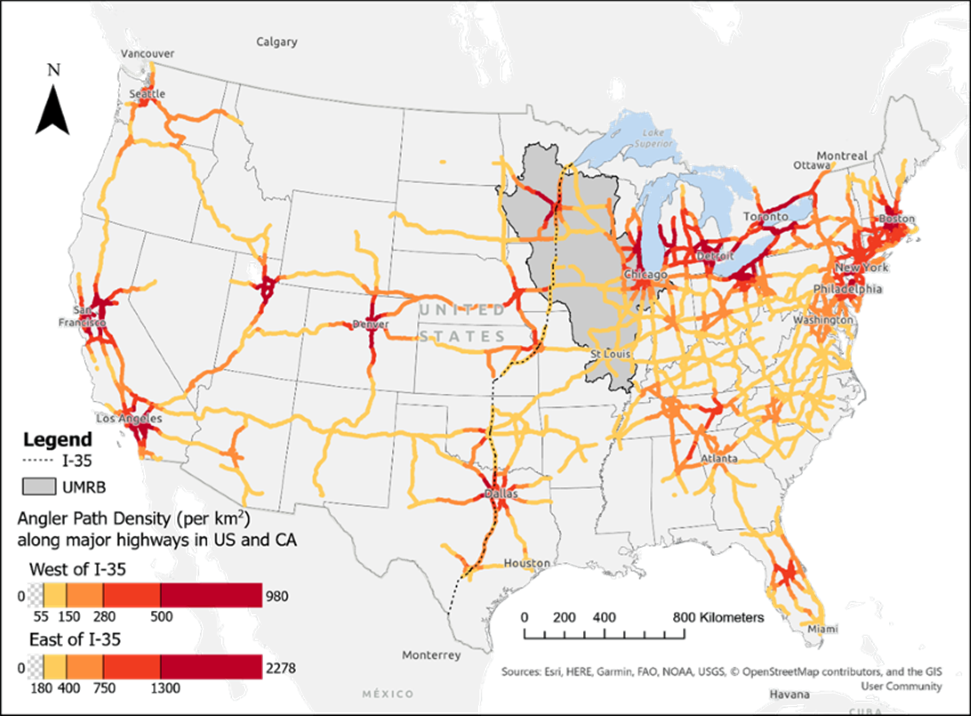Factsheet – Using Data From a Popular Fishing App to Predict the Spread of Aquatic Invasives and Identify Characteristics of Resistant/Resilient Lakes in the Upper Mississippi River Basin

End Date: 2023-03-23
Total Federal Funds: $79,195
Total Non-Federal Funds: $84,490
This project used big data from Fishbrain, the most popular fishing app in the United States, and the U.S. Geological Survey to identify roadways, lake characteristics, and timing that contribute the most to the spread of AIS within the UMRB. Agencies and Non-government organizations can use this information to inform policy, and more efficiently allocate and coordinate AIS management efforts such as detection, inspection, enforcement, and targeted education and outreach campaigns.
Research Objectives
1. Is it possible to predict which lakes in the Upper Mississippi River Basin contain aquatic invasive species?
2. Do these predictions improve if lakes that are not checked for invasive species are ignored?
3. Are some anglers more likely to spread aquatic invasive species than others?

Figure 1. A map of angler path density (per km2) along major highways in the United States (US) and parts of southern Canada. The UMRB is represented by the grey polygon. I-35 marks the division of eastern and western US. These divisions require separate scales because of differences in surface water and population density.
Researcher Profile

Major Conclusions & Significance
What Does This Mean For Indiana?
Publications from this research



